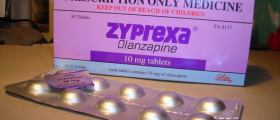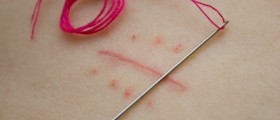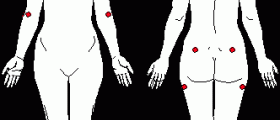
Torticolitis is a condition which manifests through abnormal flexion, curving or extension of one’s neck and the surrounding area. Thus, this condition affects the proper position of the neck, resulting in it twisting to one side. Torticolitis, when present in a person’s family history, genetically affects one in a gradual manner. Also, it may be triggered by an injury or may take place as a side-effect of certain medications.
Types of Torticolitis
When this condition affects one whose family members also have torticolitis, the condition is referred to as spasmodic torticolitis. This condition usually appears between the age 31 and 50. It gets worse if neglected, affecting a person permanently after a certain period of time.
Acute torticolitis causes discomfort and pain, resulting in deformations appearing in the neck area leading to a necessity of holding your head straight or rotating it to the side. Movements lead to pain and discomfort, when it comes to this health problem. In some cases, even the muscles in the neck area may feel painful to the touch, being tender and sensitive. When people seek medical attention bothered by these kinds of problems, doctors first need to rule out any injuries of the spinal cord, before diagnosing torticolitis.
Causes of Torticolitis
Apart from injury and genentics, this condition may take place due to side-effects of certain drugs. Ketamine, amphetamines, cocaine, Compazine, Haldol and Thorazine all can lead to acute dystonia, which manifests through problems with muscle control in the neck, leading to contractions and bending to one side. The symptoms may affect the back or the face too. Eye deviations may appear as well along with tongue protrusion.
Treatment for Torticolitis
Basically, acute torticolitis does not lead to death. Nevertheless, you should not ignore the symptoms and should seek medical assistance as soon as they appear, especially if the spasms are interfering with the swallowing or breathing procedures. These signs usually mean that the central nervous system has been affected. Additionally, the pins and needles sensation, urinary or fecal disorders, limb weakness and speech and walking problems, all are signs of central nervous system injury taking place hand-in-hand with torticolitis.
The treatment itself focuses on relaxing the problematic neck muscles through medications, physical devices, botulinum toxin or surgery. Usually, torticolitis is a condition which disappears after several days or weeks. Yet, if it remains present for moths, the condition may be permanent. Relaxants and anti-inflammatory medications are used for treating torticolitis, administered in the muscles or in the vein.

















Your thoughts on this
Loading...